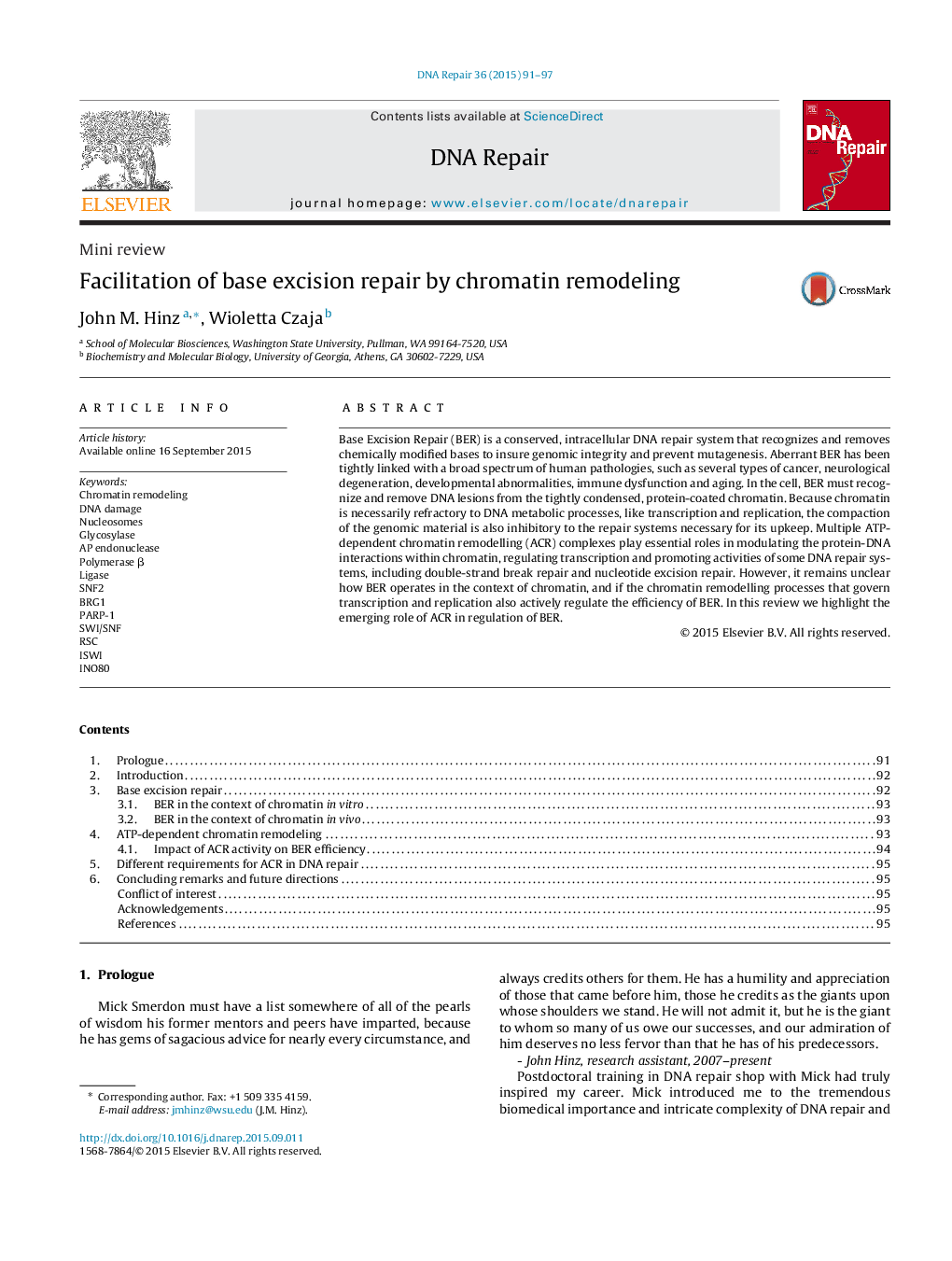| کد مقاله | کد نشریه | سال انتشار | مقاله انگلیسی | نسخه تمام متن |
|---|---|---|---|---|
| 1980050 | 1539392 | 2015 | 7 صفحه PDF | دانلود رایگان |
• There are 4 major ATP-dependent chromatin remodeling (ACR) families in eukaryotes.
• ACR is responsible for regulation of transcription, replication, and some repair processes.
• BER is responsible for the repair of most chemical modifications to DNA bases.
• ACR activity facilitates BER through protein expression and opening of chromatin.
• There lacks evidence of directed ACR activity to accommodate BER access to DNA.
Base Excision Repair (BER) is a conserved, intracellular DNA repair system that recognizes and removes chemically modified bases to insure genomic integrity and prevent mutagenesis. Aberrant BER has been tightly linked with a broad spectrum of human pathologies, such as several types of cancer, neurological degeneration, developmental abnormalities, immune dysfunction and aging. In the cell, BER must recognize and remove DNA lesions from the tightly condensed, protein-coated chromatin. Because chromatin is necessarily refractory to DNA metabolic processes, like transcription and replication, the compaction of the genomic material is also inhibitory to the repair systems necessary for its upkeep. Multiple ATP-dependent chromatin remodelling (ACR) complexes play essential roles in modulating the protein-DNA interactions within chromatin, regulating transcription and promoting activities of some DNA repair systems, including double-strand break repair and nucleotide excision repair. However, it remains unclear how BER operates in the context of chromatin, and if the chromatin remodelling processes that govern transcription and replication also actively regulate the efficiency of BER. In this review we highlight the emerging role of ACR in regulation of BER.
Journal: DNA Repair - Volume 36, December 2015, Pages 91–97
